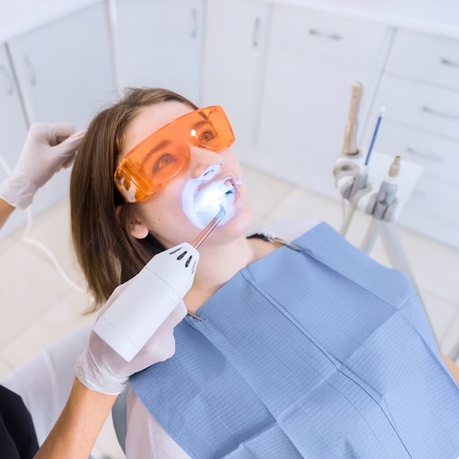Introduction
Sleep apnea is a common sleep disorder that affects a significant portion of the population, including residents of Scottsdale. It can have a profound impact on overall health and quality of life. In this comprehensive guide, we will explore the causes and symptoms of sleep apnea, shedding light on the importance of recognizing and addressing this condition.
Sleep Apnea: An Overview:
Sleep apnea is a sleep disorder characterized by repetitive interruptions in breathing during sleep. These interruptions, known as apneas, can occur due to various factors and can have serious consequences if left untreated. There are three main types of sleep apnea:
-
Obstructive Sleep Apnea (OSA): OSA is the most common type of sleep apnea. It occurs when the muscles in the back of the throat relax excessively, causing the airway to become blocked or narrowed. This leads to shallow breathing or pauses in breathing, which can last for seconds to minutes.
-
Central Sleep Apnea: Central sleep apnea is less common and occurs when the brain fails to send proper signals to the muscles responsible for controlling breathing. Unlike OSA, there is no physical obstruction in the airway in central sleep apnea.
-
Complex or Mixed Sleep Apnea: This is a combination of both obstructive and central sleep apnea.
Causes of Sleep Apnea:
Understanding the causes of sleep apnea is crucial for its management and treatment. While the exact cause can vary from person to person, several common factors contribute to the development of this sleep disorder:
-
Obesity: Excess body weight, particularly in the neck area, can lead to the narrowing of the airway and increase the risk of obstructive sleep apnea.
-
Anatomical Factors: Certain physical attributes, such as a narrow throat or enlarged tonsils, can make the airway more susceptible to obstruction.
-
Age: Sleep apnea becomes more common as people age, with middle-aged and older adults being at higher risk.
-
Family History: There is evidence to suggest a genetic component in the development of sleep apnea. If family members have the condition, your risk may be higher.
-
Gender: Men are more likely to develop sleep apnea than women, although the risk for women increases if they are overweight, and the risk during pregnancy is also elevated.
-
Alcohol, Sedative Use, and Smoking: These substances can relax the muscles in the throat, increasing the likelihood of airway obstruction.
-
Nasal Congestion: People with chronic nasal congestion may have difficulty breathing through their nose, making them more likely to develop obstructive sleep apnea.
-
Medical Conditions: Certain medical conditions, such as hypertension, diabetes, and heart failure, are associated with an increased risk of sleep apnea.
Common Symptoms of Sleep Apnea:
Sleep apnea is often undiagnosed because the symptoms can be subtle, and individuals may not be aware of their interrupted sleep patterns. However, recognizing the signs and symptoms of sleep apnea is crucial for seeking timely diagnosis and treatment. Common symptoms of sleep apnea include:
-
Loud Snoring: One of the hallmark symptoms of sleep apnea is loud and persistent snoring. While not everyone who snores has sleep apnea, it is a common indicator of the disorder, especially if it is accompanied by other symptoms.
-
Pauses in Breathing: Witnesses, such as a bed partner, may observe episodes where the individual stops breathing during sleep, followed by gasping or choking as they resume breathing.
-
Excessive Daytime Sleepiness: Individuals with sleep apnea often experience excessive daytime fatigue and drowsiness, even after a full night's sleep. This can lead to difficulty staying awake during daily activities, such as driving or working.
-
Morning Headaches: Frequent morning headaches, often described as a dull, throbbing pain, can be a symptom of sleep apnea.
-
Difficulty Concentrating: Sleep apnea can impair cognitive function and lead to difficulty concentrating, memory problems, and reduced alertness.
-
Irritability and Mood Changes: Sleep disruptions caused by apneas can result in mood swings, irritability, and increased stress.
-
Frequent Nighttime Urination: Nocturia, or the need to urinate frequently during the night, is a common symptom of sleep apnea.
-
Decreased Libido: Reduced sexual desire and impotence can be associated with untreated sleep apnea.
-
High Blood Pressure: Sleep apnea is often linked to hypertension (high blood pressure), and managing sleep apnea can help control blood pressure levels.
Conclusion:
Sleep apnea is a prevalent sleep disorder in Scottsdale that can have far-reaching consequences if left untreated. While it may seem like a minor annoyance, the interrupted sleep patterns caused by sleep apnea can lead to serious health issues, including cardiovascular problems, diabetes, and decreased quality of life. Recognizing the common causes and symptoms of sleep apnea is the first step toward seeking diagnosis and appropriate treatment.
If you suspect you or a loved one may have sleep apnea, it is essential to consult a healthcare professional or a sleep specialist for a thorough evaluation. Treatment options for sleep apnea can range from lifestyle modifications and positional therapy to the use of continuous positive airway pressure (CPAP) devices or other interventions. Timely diagnosis and management of Sleep Apnea Scottsdale can lead to improved sleep quality, enhanced overall health, and a higher quality of life for those affected by this sleep disorder in Scottsdale


No comments yet